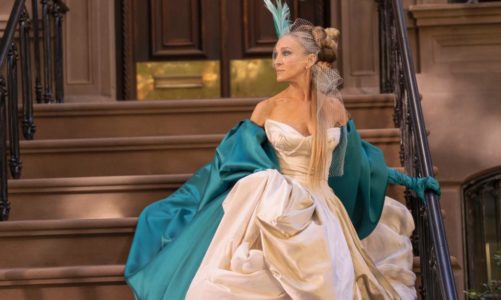HOW A MEANINGFUL RELATIONSHIP WITH GOD BECOMES AN ACT OF BRAVERY AND BEAUTY IN TIMES OF DARKNESS
A Hidden Life directed by Malick narrates horrifying ordeals of Jaggerstter and his wife Franziska as they go through fighting the Nazi revolution. The 3-hour ordeal they encounter depicts the heartbreaking intensity that feels worth enduring. The film follows the life of The Austrian farmer imprisoned in 1943 by the Nazis for refusing to take an oath for the allegiance of the Nazi party and Hitler. A hidden life takes the narration of George Elliot’s book Middlemarch. The lead characters attract many audiences through their endurances and bring moral lessons to society.
Director Malick teaches the audience to reconsider the ethical dynamics and the cost of doing what is moral without having the hope to be rewarded. The film is not typically about heroic gestures, but about being true and faithful, beautiful and good in whatever history and corner of the world, we find ourselves. The film’s narration depicts that no matter the challenges or unimaginative possibilities, what we do in real life stays longer even after leaving the real world. Malick portrays Jagersttter’s family in a dramatic scene of the beautiful Mountain View, filled with gushing and laughter in rural Austria, unaware of the storm of the war building beyond the mountains.
The film attracts wider audiences appreciating bravery and heroism amid the challenges such as the Nazi’s invasion and the imprisonment of the lead character. Being the only member in the village to vote against the Nazi’s move, refusing the training, and refusing to serve Hitler’s reign, Jaggersttter portrays resilience and true nature to the course. The story turns when a letter arrives instructing Franz to report to the military duty for further instructions. An oath to the Nazis is a bridge she cannot cross, depicting her strong will to collaborate with the rebels (Coman 2019). The moral lessons from these sequences demonstrate to the audience the true nature of Franz, always abiding by her true intentions. His incarceration and refusal to join the military is also a pivotal turn for its audiences empathizing with his calamities.
Fani is tormented and ostracized after being left in the village to raise the three siblings belonging to the couple and work on the farm. The other villagers see her husband as a traitor to Hitler’s course. Through the criticism, hate, and torment, Fani stands tall and strong. The film’s audiences have to battle through these hateful characters, as they are emotionally connected to Fani’s situation. In these scenes, Malick again poses questions to his modern viewers on the meaning of a hidden life. The location asks the audience if the insignificant roles and actions of the characters matter amid the hate and rebellion from all around them. Filled with societal injustice and poor governance filled with corruption, the audiences ask themselves if it makes sense to stand against the forceful tides even in the wake of fateful consequences that lie ahead.
The dram from A Hidden Life unfolds how the actions and choices of Jaggersttter are far from being straightforward. Franz believes that his actions and resistance will not make any changes in the lives of the villagers, let alone his nation, or aid in the course of the Nazi’s war. It is clear to Franz that taking that path will further worsen the life of his family and wife, but he still goes ahead with the decision. From this sequence, the film attracts modern-day audiences engraved with bitterness on the lead character’s dilemma. Taking a stand that goes beyond your family’s safety is always a hard task, even for its audiences. Every piece of advice he receives, ranging from the pastor to the village mayor, makes him more relentless in pursuing the resistance, showing a dynamic pattern of strong will and determination.
The narration further unravels in the prosecution of the protagonists (Fijo 2020). When presented with a chance to escape, Jaggersttter turns down the offer, citing that his conscience cannot allow him to take an oath for corrupt governance indulging in an unjust war. From these scenes, the film attracts contemporary audiences supporting the resilience and determination of Jaggersttter. In addition, it impacts a complex moral lesson of always abiding by your true colors no matter the unforeseen consequences.
Fani’s and Franz’s decisions make no sense at all in the eyes of their audiences. The Hidden Life resists providing easy answers as the audiences navigate their tough choices and decisions. It questions the moral complexity presented to its audiences by not choosing to take a clear route and stop the resistance. The determination of the audiences to see through the choices of their lead characters questions the notion of selecting morality and safety. Considering the frustration of the Nazi party rebels, the audience view collaboration as the easy way out.
What can be learned from the film’s audiences is the contradiction of individual ethics versus utilitarian ethics focusing on the greater good. The contemporary audiences of the film choose between observing and standing by the moral code of the audiences, and at the same time taking a shorter way out of the troubles of the characters. Each action taken in an extreme situation results in intolerable consequences. The notions for advocating for the good questions Malick movie in rationalizing the issue of personal molarity even when it seems pointless.
The film audiences attempt to challenge the notion of pride depicted by Jaggersttter. Despite the town’s mayor, bishop, priest, and lawyer supporting the Nazis, the pride in Jagersttter’s audiences still lingers on, even when there is no point at all. The pride of knowing there is nothing he can do to influence the Nazi’s war and still going ahead to rebel depicts a sense of shortsighted pride and temper (O’Malley 2019). These scenes attract audiences filled with v pride and character and demonstrate the value of abiding by true emotions amid the criticism and unforeseen consequences.
Another vital lesson to be learned from the audiences of A Hidden Life is the harmful religious convictions, noting that in the life of Jaggersttter, it is their religious faith that drives them into the positions they take and see them through their sustained hurdles. With the delusions of the church collaborating with the Nazi regime. The war between Jaggersttter and the church attracts audiences viewing religion as a tool supposed to be morally upright. In addition, it demonstrates the essence of believing in yourself without the advice and interference from society, such as the church and clergy.
Moreover, Malick’s film targets audiences that seek entertainment. He expects his audiences to create visions with much thinking about the characters and plot. He applies methods of narration that seem out of the ordinary, expecting his audiences to act like adults. The beauty and voice-overs inspire reflection that targets adult audiences. The three-hour film is presented to allow Franz to from his conscience, giving the audience ample time to connect with Franz’s emotions and frustrations. The portrayal of small quiet moments, the harvesting grains, and the distinctive sounds provides the audience time to contemplate the film scenes. It demonstrates the patience of the adult audiences, going through the quiet sounds and character plot all through the three hours.
The film also attracts audiences that view gratitude as a societal norm. While in prison, Franz notices the grass and appreciates the beauty, which he could not have seen and respected in the outside world. It connects with audiences appreciating gratitude. In addition, most of the scenes in the film depict Franz drinking quietly, seeing life as an ultimate gift. More so, the depiction of beauty in the mountain Alps attracts audiences with an appreciation for beauty (Peters 2020). The beauty and gratitude of the rocky landscape also portray the kind of audiences the film attracts, those with catching eyes for scenery.
Jagersttter’s household is filled with frustrations and hardships. Despite that, the film’s audiences witness the love and joy, a sense of family life. Though Franz and his wife are not in agreement concerning his decision, her support and unwavering emotions carry Franz through the struggles. Audiences demonstrate a sense of family unity. It attracts audiences that invest and focus on their interior lives, as in Franz farming and cultivating his life with due diligence as he does on the farm. The real work in the field also represents the work that occurs through the rebellious state.
A Hidden Life film attracts a wide variety of audiences as seen by the lives of Franz and his family. The audiences demonstrate different sets of emotions as they connect with their characters. In addition, its resilience of Franz dictates the nature of audiences it attracts throughout the film, ranging from the modern-day contemporary and adult audiences (Santos 2021). The film also presents human values and the preservation of morality amid unforeseen consequences and the nature to push through without wavering.
Visual Pleasure and Narrative Cinema
Freud and Lacan’s theories influenced Laura’s work, affecting the film theory perspective toward a psychoanalytic approach. The essay was composed to analyze beauty and pleasure, arguing that there is a need to formulate new filming approaches to incorporate feminist techniques in order to halt the male-oriented Hollywood industries. Looking at Hollywood films, Laura deduces in her work that the current film industries are majorly made for male gazes. She refutes that these classical movies portray heterosexual pleasures dominated by men on how they look at the female (Mulvey 1989). She further argues that no matter the gender of the audience, the male gaze will always be predominant in watching a spectacle.
It is of great essence to agree with Laura’s essay, considering that in the modern-day patriarchal society, the suffering of women is portrayed as a source of pleasure and enjoyment. From pop songs to opera films, the suffering of women, oppression, bullying, and all methods tend to generate aesthetic satisfaction in the eyes of its viewers. From the early 70s and 80s, Catherine Clement, Laura Mulvey, among other feminist theories, depicted how artwork dehumanized female characters to bring out pleasures. The pleasure witnessed in Hollywood cinema, like experiencing the lead characters’ victories as individualistic, is made possible by the camera gazes in the obscure production of films.
Most Hollywood classic films portray women’s body parts, but not them as whole beings. Portraying women’s bodies as sexualized objects further reinstates Laura’s arguments. The nature in which the camera cuts objectifies women, something that classic films like in bringing out the aesthetic pleasures. Through applying Freud’s approach to psychoanalysis, it is evident that a man gains power by what a woman lacks, abiding in fear and exerting control. Just like Hollywood films, the essay argues on the notion of developing film’s pleasure through the suffering of women.
Moreover, Lacan refutes that language encoded in patriarchal morals creates a sense of unconsciousness, forming a structure that disempowers women. Mulvey incorporates the psychoanalysis theory to better the understanding of the societal status quo. She agrees with alternative forms of films but argues that the status quo of Hollywood cinema only aims to satisfy the patriarchal desires that center on women’s oppression and visual depiction.
In modern-day society, the pleasure of looking contradicts Laura’s essay. The second part of the essay culminates Freud’s notions on scopophilia, the pleasure derived from looking (Jennings 2018). According to Freud, scopophilia manifests in children’s activities willing to witness forbidden acts and areas. This way of looking manifests others into pleasurable objects, as Freud considers the act as a component of instinct in sexuality. Laura argues that these components with scopophilia create illusions of darkened viewing, encouraging the audiences of mainstream cinema to engage in experiencing erotic pleasures in women characters.
The visual pleasures in narrative cinema integrate Freud’s narcissistic idea of scopophilia with Laura’s link to the mirror phase theory by Lacan. It asserts that before a child learns to talk or walk, they usually develop ideas of self-awareness by looking through the mirror. At this stage, the child recognizes himself and, at the same time, has perceptions of the mirrored self, having more agency that the usual self. During this time, a child develops the emotions of ego, a reflection on what more he can perceive from others. Laura refutes that the conventions contained in mainstream cinema focus on the human form in glamorous incarnations, therefore appealing to the narcissistic urge to stare at others, reflecting the idea of ego. Applying the theory to Hollywood cinemas, the loss of ego in the male gaze gives space for the reflected self to satisfy the emptiness.
What contradicts Laura’s essay on modern society is the depiction of subjectivity and objectivity that portray the erotic pleasures in Hollywood cinemas. The separation of pleasure of the object from the subject on film screens demands the combination of the thing and the ego. The essay contradicts the modern-day patriarchal society in its representation of separation. Further contradictions of Freud’s theory of spectators with a function of ego and sexual drives implicate the idea of visual representation of women (Jain Garud & Mazid 2019). The cinematic representation of women in Hollywood films offers a fantasy world to male audiences, not implicating the idea of sexual and erotic narcissistic behavior.
According to Laura’s part 3 essay, modern-day Hollywood cinema portrays women as images and men as bearers of the look. It tends to seek explanations for women’s role in recreating the visual pleasures contained in narrative cinemas. The ideologies of sexual differences depict the power and presence of men, placing women as objects to look at. Her essay aligns with the acknowledgments of the modern-day, viewing women as key erotic objects to be gazed at. Women are indispensable elements in narrative films, yet their visual presents offset the depiction on screens. Holding the look of women on cinema screens jeopardizes the creation of narrative films.
According to Laura, Hollywood classic films rely on male subjectivity heroes to overshadow the women’s disruptive images. Modern-day society reaffirms her theories, considering that film audiences look at women on screen as erotic objects. The active subject in narrating films objectifies women as having passive erotic roles and men being the heroes. Male characters control the events by dictating the physical structures and ideologies and editing and framing conventions in classic cinema. In addition, the incorporation of camera techniques that major on deep focus perspectives combined with editing establishes an illusion that reflects the real world. The cinema screens assume the egoistic male hero compared to the passive tendencies depicted by women. Therefore, from the arguments above, Laura’s essay qualifies to address gender in modern-day Hollywood classical films.
Mulvey further refutes that traditional cinemas work in several ways to mitigate the reorientation of women as objects. The first approach works on investigating voyeurism that expresses a woman’s mystery or guilt and finally ends with saving or punishment. The second approach addresses scopophilia to maintain the development of a narrative, inviting the male spectators to view women as tools of sexual desires (Creed 2018). In association with Alfred Hitchcock and Joseph von Sternberg films, Mulvey identifies the fetish scopophilia in films such as Dishonored. She refutes that in the film Morocco, the absence of the controlling male gaze allows its audiences to engage in scopophilia.
In accordance with the modern-day patriarchal society, Mulvey’s arguments that other visuals, such as photography, exploit how a woman is supposed to be looked at in cinemas. Traditional cinemas accomplish this theory by suppressing conventions that construct the screen’s contents. The viewer’s absorption through a male gaze into the real world in narrative films helps how a woman is viewed on screens by audiences. In addition, Mulvey asserts that the only way to disrupt the male gaze is by allowing the camera to be present and known in the film scenes. Her conclusion in the essay reflects the decline of traditional cinemas in bringing out women as whole beings rather than objects. From the arguments above, Mulvey’s essay reaffirms the gendered role of women as spectators in Hollywood cinema.
Mulvey’s ‘Visual Pleasure and Narrative Cinema’ depicts the presentation of women like mere tools and subjects oppressed by the male gazes in cinema. Application of Lacan’s and Freud’s theories in explaining the development of women while incorporating films better the understanding of the roles of women in the gendered Hollywood industry. Furthermore, her essay illustrates the sexual differences in modern-day patriarchal societies. Women’s roles in cinema are only intended to satisfy men’s desires without actively acknowledging women as whole beings (Correia & Barbosa 2018). It further explores the masculine features associated with the male ego while comparing it with feminist attributes that stereotype women as objects.
Phoenix Melville is a British-French director, writer and artist.
References
Coman, S. (2019). A Hidden Life. Journal of Religion & Film, 23(2), 14.
Correia, A. F., & Barbosa, S. (2018). Cinema, aesthetics, and narrative: Cinema as therapy in substance use disorders. The Arts in Psychotherapy, 60, 63-71.
Creed, B. (2018). Feminist film theory: reading the text. BLONSKY, A.
Fijo, A. (2020). A Hidden Life: Malick’s Requiem. Church, Communication and Culture, 5(2), 187-209.
Jain, P., Roy, E., Garud, N., & Mazid, I. (2019). Sexuality and substance abuse portrayals in item songs in Bollywood movies. South Asian Popular Culture, 17(1), 15-29.
Jennings, S. C. (2018). Women agents and double agents: Theorizing feminine gaze in video games. In Feminism in Play (pp. 235-249). Palgrave Macmillan, Cham.
Mulvey, L. (1989). Visual pleasure and narrative cinema. In Visual and other pleasures (pp. 14-26). Palgrave Macmillan, London.
O’Malley, S. (2019). A Hidden Life. Film Comment, 55(6), 66-67.
Peters, B. T. (2020). A Hidden Life dir. by Terrence Malick. American Catholic Studies, 131(2), 63-65. Santos, D. P. (2021). 21. DWELLING IN ‘A HIDDEN LIFE’: HEIDEGGER’S CONCEPT OF THE FOURFOLD IN MALICK’S FILM.




